With its rich and unique cultural history and historic architecture, Prospect Avenue between Washington Road and Murray Place is one of the most iconic streets in Princeton, and in July of 2022, Council recognized that distinctive heritage by approving the Prospect Avenue Historic District.
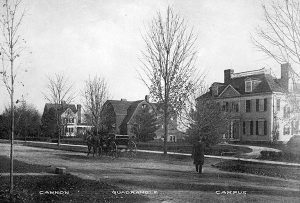
The area was originally part of the Joseph Olden Farm that dated back to the 1770s. The Oldens called it Spring Valley for its fine view of Stony Brook and the farm fields beyond in West Windsor. In the 1870s, Olden descendants sold land on the east side of Olden Street, which started as a farm lane, to alumni who established the University Fields there. The Oldens also sold lots on a new Prospect Street, named for its fine views, to retired University President James McCosh and prominent faculty including Andrew Fleming West and Henry Burchard Fine. With theirs and other large Shingle Style and Colonial Revival houses lining its south side, Prospect soon became known as Faculty Row. Local builders erected Queen Anne Style cottages further east on Prospect. Campus Club soon took over the West House and Quadrangle occupied the Fine House. When Campus and Quadrangle wanted grander masonry clubhouses, they respectively sold the West and Fine houses to local builders who moved them to the opposite corners of Nassau Street and Princeton Avenue, where they each contain several apartments today.
On the west side of the campus, some enterprising sophomores in 1877 formed an eating club in Ivy Hall, the small elegant brownstone building on Mercer Street built by Robert Stockton in 1847 for the college’s short-lived law school. The building later served as offices for the Delaware and Raritan Canal, and is now owned by Trinity Church. The sophomores hired Henry Campbell of the Witherspoon Jackson neighborhood as cook and steward, thereby starting the long history of black residents working at the eating clubs. With its good food and independent socializing, the Ivy Hall Eating Club was immensely popular and in 1879 the founders incorporated it in perpetuity for juniors and seniors. The college had banned outside fraternities in the 1850s, but the faculty approved this eating club as a Princeton students’ initiative.
In 1883, the Ivy members with support from their own recent alumni built a handsome clubhouse on Prospect Street to be near the University Fields, and they shortened their name to Ivy Club. Other undergraduates formed the University Cottage Club on Railroad Avenue (now University Place) in 1886, and when their successors built a large new Cottage clubhouse on Prospect across from Ivy Club in 1892, the race was on. With football and baseball on the University Fields becoming more and more popular, “the Street,” as students still call it, became the center of student social life. Students formed 17 additional eating clubs, often taking over the earlier faculty houses and cottages on Prospect, which as it was extended eastward became known as Prospect Avenue.
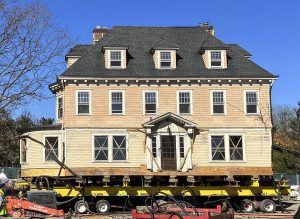
As competition for the top undergraduates increased, the clubs needed grander and grander clubhouses. Several clubs sold the former faculty houses and cottages to local builders, who moved them down Prospect or to other locations. The former McCosh House occupied by Quadrangle Club is on East Nassau across from Bank of America, and the former West House occupied by Campus Club and the former Fine House occupied by Quadrangle and Tower Clubs are on the corners of Nassau and Princeton Avenue. The former Key and Seal Club was moved across Prospect in 1923 and was just moved a second time in November by the University to make room for the former Court Clubhouse, which the University will move across Prospect in early 2023. The two adjacent smaller Queen Anne Style houses were also moved across Prospect in the 1920s, and later served as residents for prominent faculty. The University is planning to rehabilitate all four buildings for its continuing use.
The fifteen majestic clubhouses lining Prospect Avenue and one adjacent on Washington Avenue date from the 1890s to the 1920s and represent the growth of campus life as Princeton University became a national leader in higher education. The architects of the buildings and structures include McKim, Mead and White of New York, which also designed the Fitzrandolph Gate at the front of the Princeton campus on Nassau Street; the Philadelphia firm Cope and Stewardson, designers of Blair Hall and Arch on campus and some houses in town; Raleigh Gildersleeve, designer of several buildings for Moses Taylor Pyne, including Lower Pyne Hall now occupied by Hamilton Jewelers at the corner of Nassau and Witherspoon Streets and additions to Drumthwacket; and seven graduates of Princeton, including Arthur Ingersoll Meigs ’03 of the prominent Philadelphia firm of Mellor and Meigs, and Rolf Bauhan ‘14, designer of some 70 buildings in Princeton. McKim, Mead and White also designed the monumental Ferris Thompson Wall and Gate that the University erected on the north side of Prospect in 1911 to mark the importance of the University Fields.

Besides Prospect Avenue’s architectural history, its cultural history represents the evolution of self-governing undergraduate social life from its earliest period of all-male, all white, Christian membership to the gradual integration of women, Jewish, Black, Latino, Hindu, and Muslim members. From the founding of Ivy Club in 1877, the permanent eating clubs were staffed predominately by Black residents, and the process of creating the Prospect Avenue Historic District brought out many interesting stories of Black men, women and even teenagers working on “the Avenue” at the Clubs. More of this rich history remains to be discovered, and in recent decades Latino members of the community working at the clubs are creating their own cultural history on Prospect.
Each of the eleven active eating clubs is an independent, private organization run by their junior and senior members and their alumni. Sophomores typically join in their spring semester through a competitive process called bicker at seven of the clubs, or by simply joining one of the other four clubs that do not bicker. Unlike nearly all fraternities and sororities, the clubs are coed. The clubs serve three meals during the week and brunch and dinner on weekends, and they have parties and educational events. Student officers live in the rooms on the upper floors. Each club has a library, and many members study there or in other rooms. F. Scott Fitzgerald, a member of the Class of 1917 who did not graduate, started his first novel, This Side of Paradise about his undergraduate experience, in Cottage Club’s magnificent library. Besides their social, dining, and educational roles for students, the clubs’ lifelong connections for their alumni members have contributed enormously to the “Princeton spirit” prominent at athletic games and reunions.
In 2017, the Princeton Prospect Foundation, a non-profit that assists the clubs with preservation and educational support, commissioned The Princeton Eating Clubs, an extensively illustrated book that chronicles the development of the clubs and their architectural significance. The book is available at the U-Store, Labyrinth, and on Amazon. In the spring and fall, PPF organizes open houses at the clubs, and in cooperation with the Princeton Historical Society runs tours of Prospect Avenue.
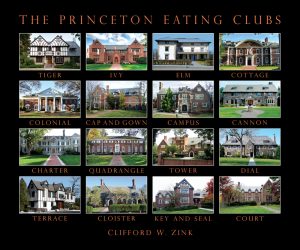
Designation of the Prospect Avenue Historic District in 2022 came about as part of a compromise between the University and the Princeton Prospect Foundation and the Save Prospect Coalition, along with the town Planning Board and Historic Preservation Commission and their staff. With the compromise, the University will erect a Theorist Pavilion as the Prospect entrance to the Environmental Science and School of Engineering and Applied Science complex it is building on Ivy Lane and Western Way, and it will preserve the former Court and Key & Seal Clubhouses and the adjacent Queen Anne Cottages on the North side of Prospect.
First proposed by the Historic Preservation Commission in 1992, the Prospect Avenue Historic District adopted last year will help manage future changes on Prospect to ensure that they are compatible with its rich and unique history and magnificent streetscapes.
Clifford Zink is an historian and preservation consultant. He has written eight books that have won six awards.

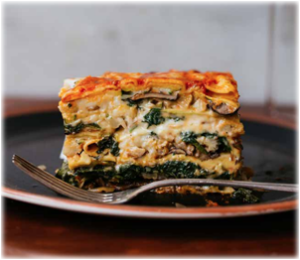 Ingredients:
Ingredients: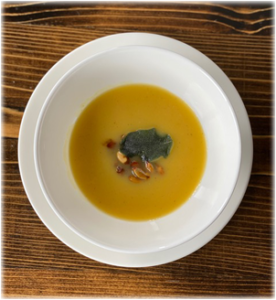 Ingredients (4-5 servings)
Ingredients (4-5 servings)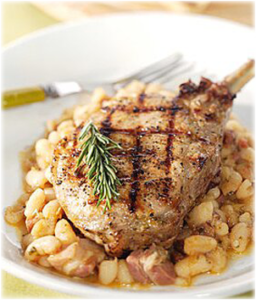
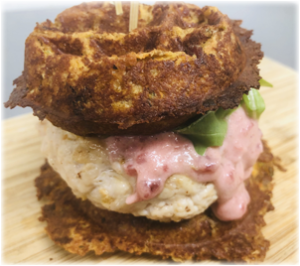 Ingredients:
Ingredients:
